Guide to Identifying Original 1969 and 1970 Front Turn Signal/Parking Housings(Mod Note - Information can be viewed and printed in a pdf Article form using this link)
http://www.concoursmustang.com/forum/index.php?topic=2275.msg11636#msg11636All 1969 and 1970 Ford Mustangs (Except Shelby) had front bumper mounted dual use parking lamp/turn signal housings. These housing assemblies use Ford basic part numbers 13201 (for left side) and 13200 (for right side) and are broken down as follows:
1969:
LH C9ZZ-13201-A
RH C9ZZ-13200-A
1970:
LH DOZZ-13201-A
RH DOZZ-13200-A
The only identifying marks on the housings themselves are actually not Ford part numbers or engineering numbers, but rather SAE (Society of Automotive Engineers) codes. SAE regulates the design, position and specifications of all lighting devices so you will normally find the SAE code on all the different housings and lenses on Mustangs and any other U.S manufactured car and truck up to and including today. Both the housings and lenses have the exact same markings (with the addition of LH and RH for left and right side) and are broken down as follows:
1969:
SAE-PD-69MG
P=Parking Lamp
D= Turn Signal
69=1969
MG=Ford Mustang
1970:
SAE-PI-70MG
P=Parking Lamp
D= Turn Signal
70=1970
MG=Ford Mustang
The housing assemblies themselves between the two years are completely different with the three main differences being the attaching bracket, the wire harness and the plating.
1969:

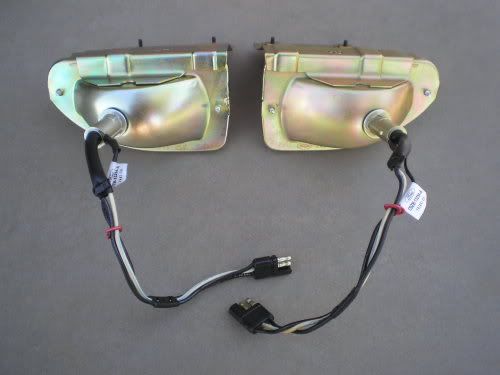
These housings were originally plated with a zinc dichromate from the factory with the wire harness socket having the same finish. These housings are actually two stamped pieces that typically had 5 spot welds holding them together. Interesting note that some of these housings are actually date coded on the top side with a two digit month/year stamping which you can see on really clean original housings.
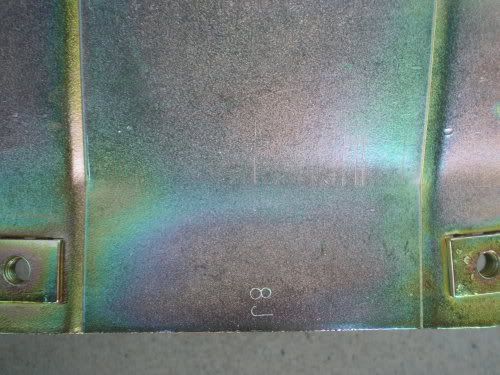
The inside of the 69 housings housings are painted a reflective silver paint after plating. There was a round area left with no paint, at the opening for the bulb holder to allow for good electrical grounding once assembled. Some of the mid 70’s and later service housings may have been plated in silver zinc finish instead of the zinc dichromate.
1970:
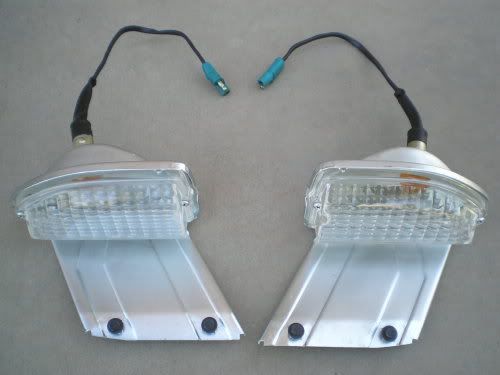
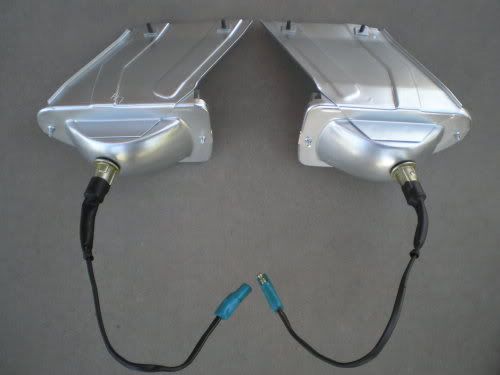
These housings were originally plated with a silver zinc from the factory with the wire harness socket having a zinc dichromate finish. As with 69 housings, these are actually two pieces that typically had 5 spot welds holding them together. The inside of the housings were painted just like the 69 housings with reflective silver paint. Unlike 69 housings I have found no evidence of any date coding on the 70 housings as of today.
Wire Harness Sub-Assembly1969:
The wire harness assembly used in 1969 consisted of a three wire design with an extra wire being the ground wire (versus the 70 style). I have seen two styles of this wire harness with the main identifying difference being the way the three wires were held together - by either ¾ inch electrical tape or a molded plastic retainer. In both cases the wires are held together about 4 ½ inches from the pigtail end of the wire harness. Also, all wire sub-assemblies have a small red wire on the opposite end looped around the harness to keep the wires bound together. In the mid 70’s Ford started selling the 69 turn signals with two wire plugs. It is hard to imagine Ford making such a mistake, but they do not plug into the existing wiring on a 69 Mustang. They are still found NOS, today sometimes on Ebay or at swap meets.
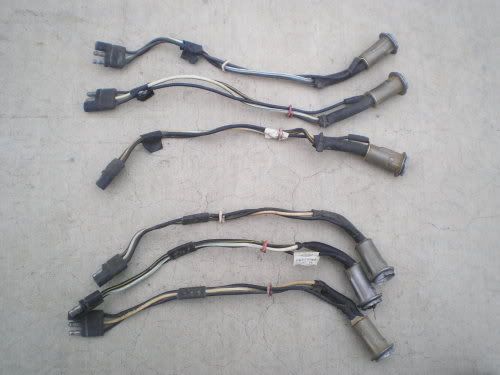
It’s also common to find a paper sticker on original wire harnesses that is the engineering number of the wire and socket subassembly. This sticker is being reproduced (by ECS) today and is very close to the original stickers. This sticker would be wrapped around the ground wire with the most common location being close to the bulb socket.
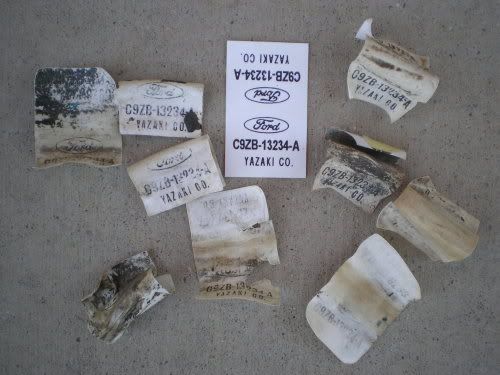
1970:
The wire harness assembly used in 1970 was slightly changed by removing the ground wire. This was most likely done because the entire lamp assembly is already grounded to the bumper and no need to run an extra wire. As with 1969 there is two versions of this wire harness I have found. One version of the wire harness is completely shielded from the pigtail connector up to the bulb socket and covering half of the bulb socket. The other version only has a 3 inch rubber shield roughly in the center of the harness.
The two versions of harnesses also have slightly different pigtail connectors with the one version having a much more visible blue molded rubber plus their overall dimensions between the two versions are slightly different. There is no evidence of any paper stickers ever being used on assembly line 70 harnesses. Probably the two version were sold to Ford by different suppliers, one of which would likely have been Yazaki.
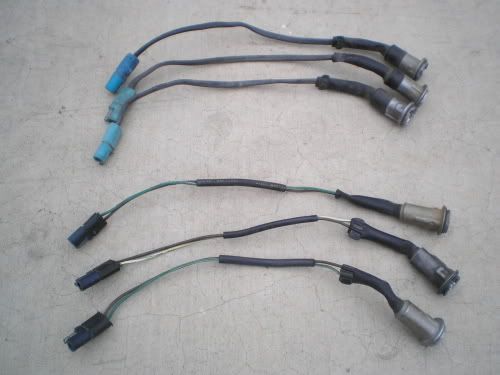 Lenses:
Lenses:Original 1969 and 1970 Mustang lenses are clear and exactly the same except for the SAE codes for the two years. All 69 lenses have a square FoMoCo symbol and all 1970 lenses have a round FoMoCo symbol. Some of the reproductions I have seen have no SAE codes or FoMoCo markings on them at all. Ford part numbers:
1969:
RH C9ZZ-13208-A
LH C9ZZ-13209-A
1970:
RH DOZZ-13208-A
LH DOZZ-13209-A
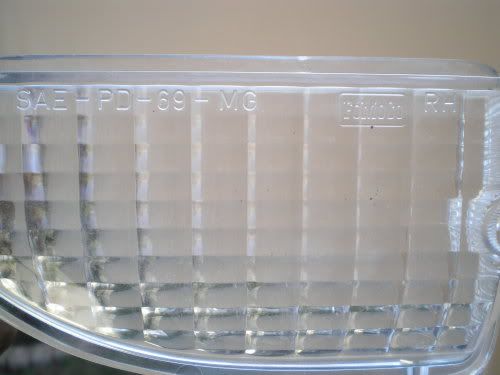
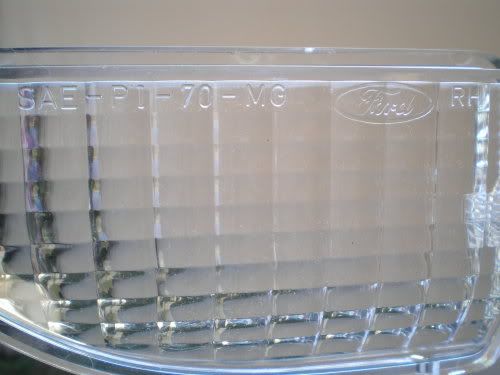 Housing to bumper screws:
Housing to bumper screws:All 1969 and 1970 housings are attached to the bumpers with two 8-32 x ¾ screws that would have had a phosphate finish plating. Ford part number 57077-S. There are three different style head markings on original housings I have come across and AMK makes a copy of the most popular head marking with the SEMS stamping.
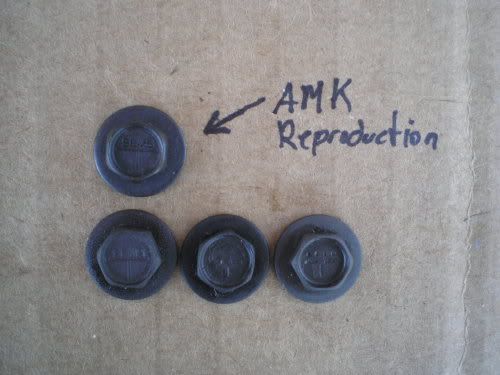 Bulbs:
Bulbs:Ford part number C9MY-13466-A these were amber 1157A dual filament bulbs. The original bulbs that were used in 1969 and 1970 were actually clear bulbs with amber paint on the inside or outside of the bulb - that would eventually flake off. If you look closely you can see some of the paint overage on the metal housing. Later bulbs eventually were colored glass or plastic. And as with so many other things the bulbs are actually date coded (ink stamp).
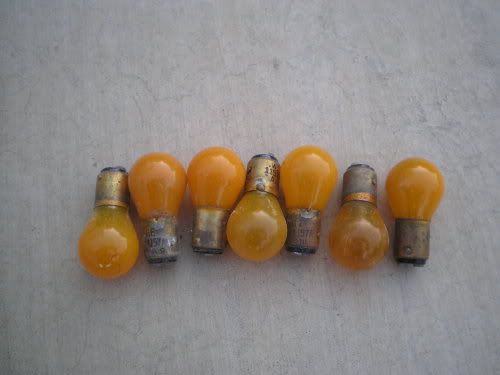 Lense Gasket:
Lense Gasket:Ford part number C9ZZ-13211-A these gaskets are used in both 1969 and 1970 and interchangeable from side to side. The current reproductions are not cut accurately and do not fit without some stretching and pulling and from all the originals I have seen the color seems to be off as well (this still needs to be confirmed). I am working now with a new source so hopefully a new more accurate gasket will be available soon. This photo shows original gasket over a reproduction gasket.
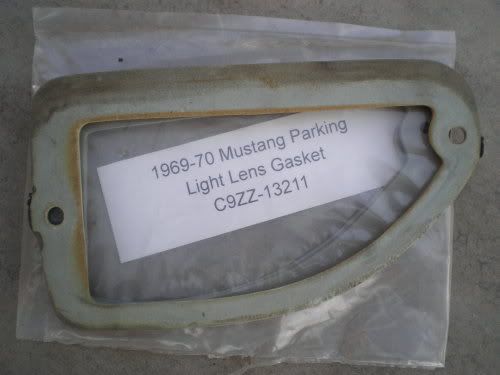 Lense to Housing Screws:
Lense to Housing Screws:Two of these screws were included with the original assemblies, and also packaged as “attaching hardware” when buying a new Ford lense it was included in the box. The original style has a set off in the threads so that it makes it difficult to overtighten the screws and break the lense. Ford part number is 378179-S at 1 inch long. Also have seen a replacement style that is completely different than the original style as shown in the photo. They are available from AMK.
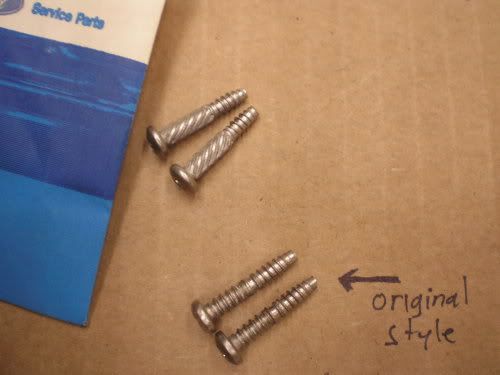
***Special thanks to Bruce Klier for helping on this project over the last 2 months with all of his years of experience. We collected about 100 housings to come up with everything written here and to get a good sample to base everything on.